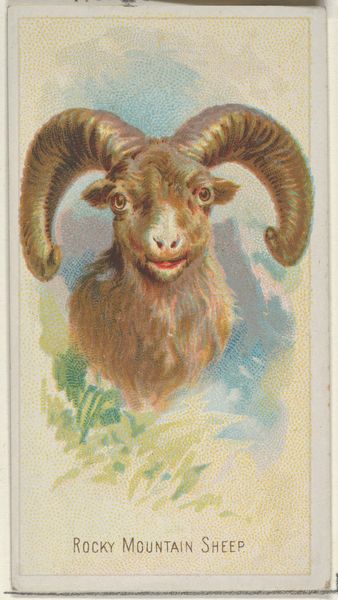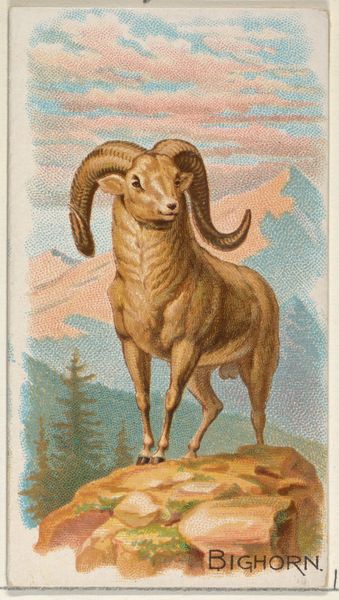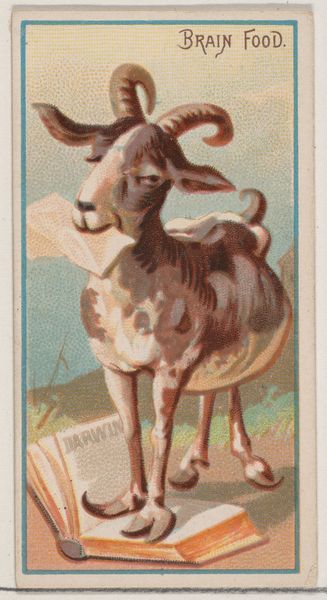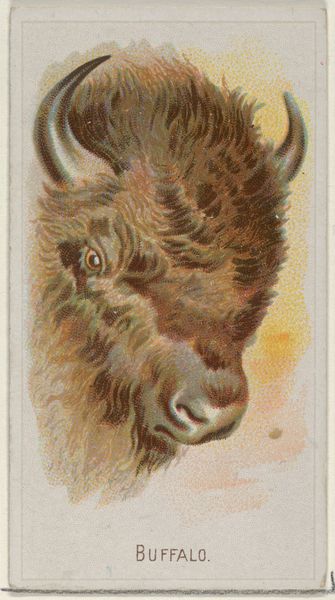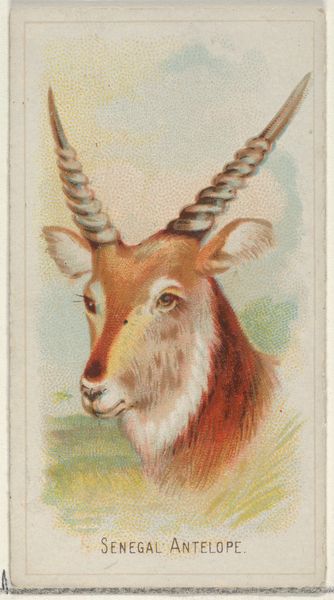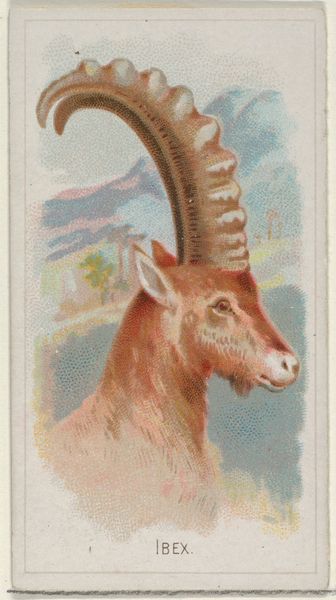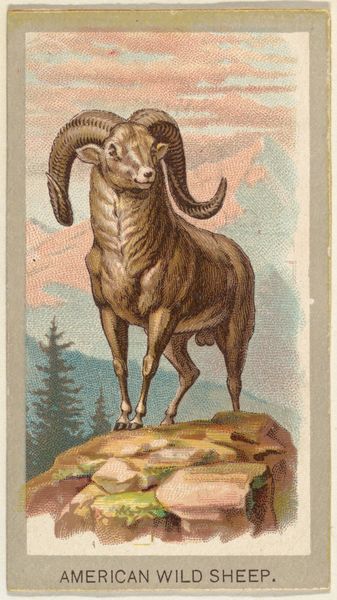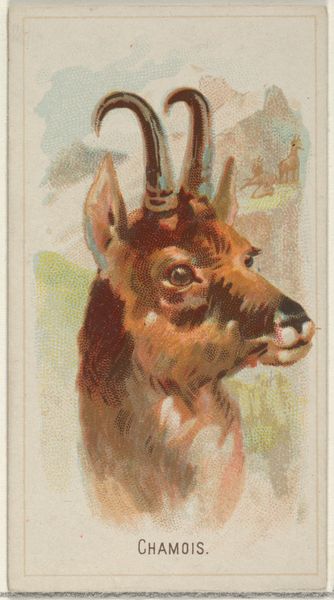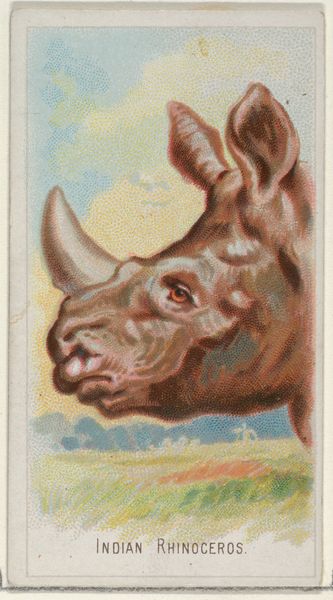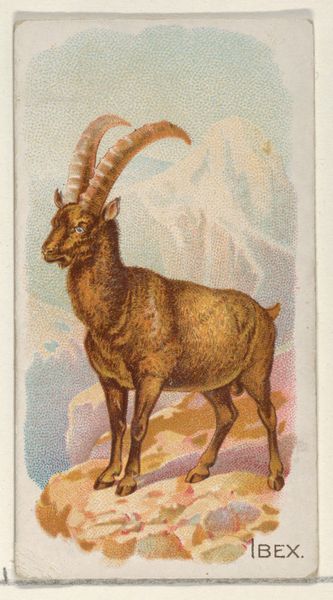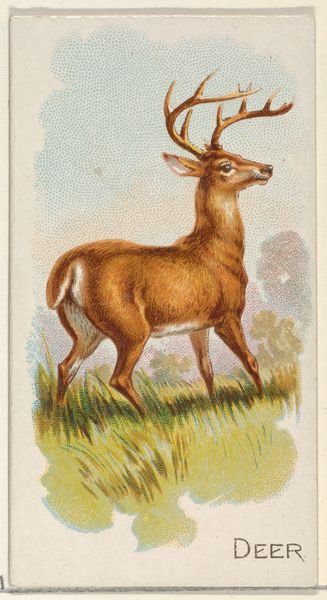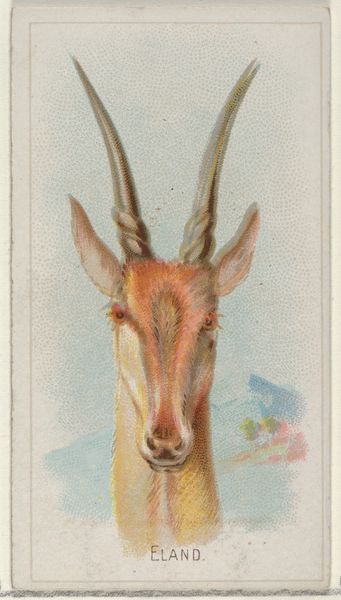
Musk Ox, from the Wild Animals of the World series (N25) for Allen & Ginter Cigarettes 1888
0:00
0:00
drawing, lithograph, print
#
drawing
#
animal
#
lithograph
# print
Dimensions: Sheet: 2 3/4 x 1 1/2 in. (7 x 3.8 cm)
Copyright: Public Domain
Editor: This is "Musk Ox, from the Wild Animals of the World series," a lithograph from 1888 by Allen & Ginter. It’s a small print, a card, really, and the level of detail achieved through the printing process is fascinating. How do we consider this outside the traditional art historical canon? Curator: Exactly. This image wasn’t intended as “high art,” but rather as a mass-produced collectible, included with cigarette packs. We must ask about its place within the network of production and consumption. Who were Allen & Ginter, and how did their manufacturing processes allow for such detailed reproductions? The original "art" is subsumed by labor and capital. Editor: So, the focus isn't necessarily on the musk ox itself, but on the cultural machine that produced its image? Curator: Precisely. It’s not simply about appreciating the depiction of an animal, but questioning the very act of its reproduction and distribution. The choice of subject is key as well. Why a musk ox? Consider its status as an exotic animal, desired by consumers as novelty or an investment. It suggests a whole network of relationships related to imperial ambition and the "consumption" of the world. Editor: It’s almost like the card itself is a product of colonial desire. I hadn't thought of it that way before! Curator: Right! Now consider the drawing itself – how the lines are produced, and if this affects the art, commerce, and science involved with production and sales. These are clues. Understanding those historical conditions of production allows us to critically examine the aesthetic and commercial choices made by Allen & Ginter. What's more important than just a pretty picture is to see how the printing process made an animal exotic for a culture unfamiliar with it, to inspire further consumer consumption. Editor: It makes you consider how even seemingly innocuous images are embedded in much larger power structures. Thanks, I'm taking notes. Curator: Of course, now you should start seeing and appreciating more of the underlying power structures behind what’s printed today.
Comments
No comments
Be the first to comment and join the conversation on the ultimate creative platform.

